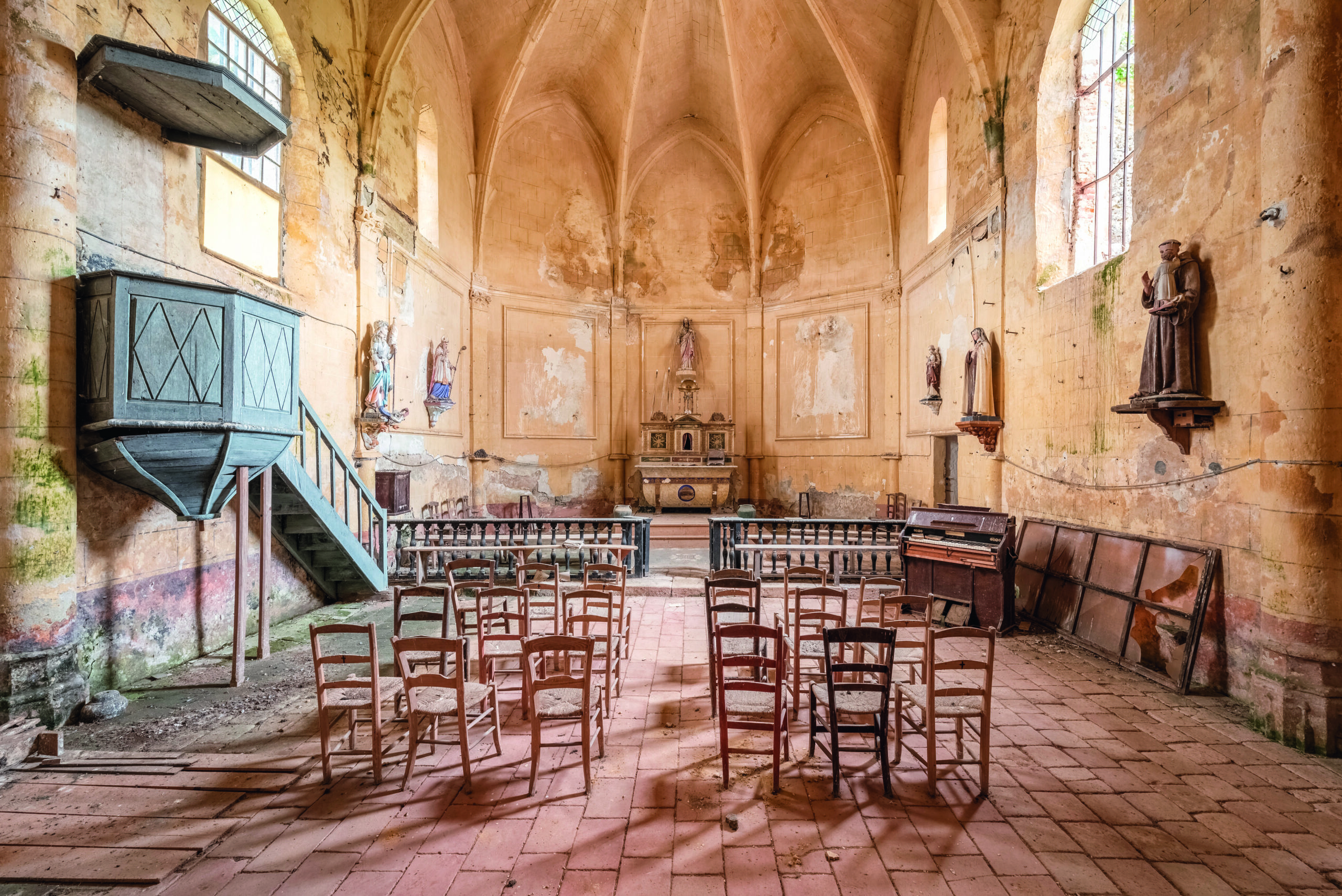
Francis Meslet is a professional photographer and author of the photography book “Abandoned Churches – Unclaimed Places of Worship”. Francis has over 30 years of photography experience and frequently travels the world in search of places that have fallen into disuse – religious buildings where time has stood still and capturing the stillness and emptiness of these sites. Between 2012 and 2019 Francis Meslet photographed several hundred places of worship across Europe. This book offers its readers an opportunity to immerse themselves in places that have been abandoned by their faithful, and the devastation that threatens all of our religious heritage.
We’ve conducted an interview with Francis in order to understand what he has learned from embarking on this project and to learn his thoughts on the importance of religious heritage and what can be done to protect it.
What inspired you to embark on this project [Abandoned Churches]?
I am from the northern tip of the region of Lorraine in France, a place devastated by unemployment, where there are more urban wastelands than museums. After a couple of months, I had explored all my secret destinations and decided to broaden my scope of research to neighbouring countries with an equally rich legacy of abandoned industrial sites. This diabolical spiral kindled within me an interest for other types of buildings, pushing me further away from my starting point: Luxembourg, Belgium, Germany, the Netherlands, Portugal, Spain, Italy, Japan . . .
After a decade spent striding across these parallel worlds, through the looking glass, I was stunned by the number of places of worship — from the simplest chapel to the tallest church — that had been abandoned by their followers. I was still more amazed by the poetic touch of these places.
«… I am a non-practising Christian. I was brought up with Christian values, but these were more social than religious… I am baptized, I went to mass when I was a child, but I must admit that I lost my way towards the church when I became an adult. However, I am very respectful of the beliefs and religions of others in the world around me…. ”
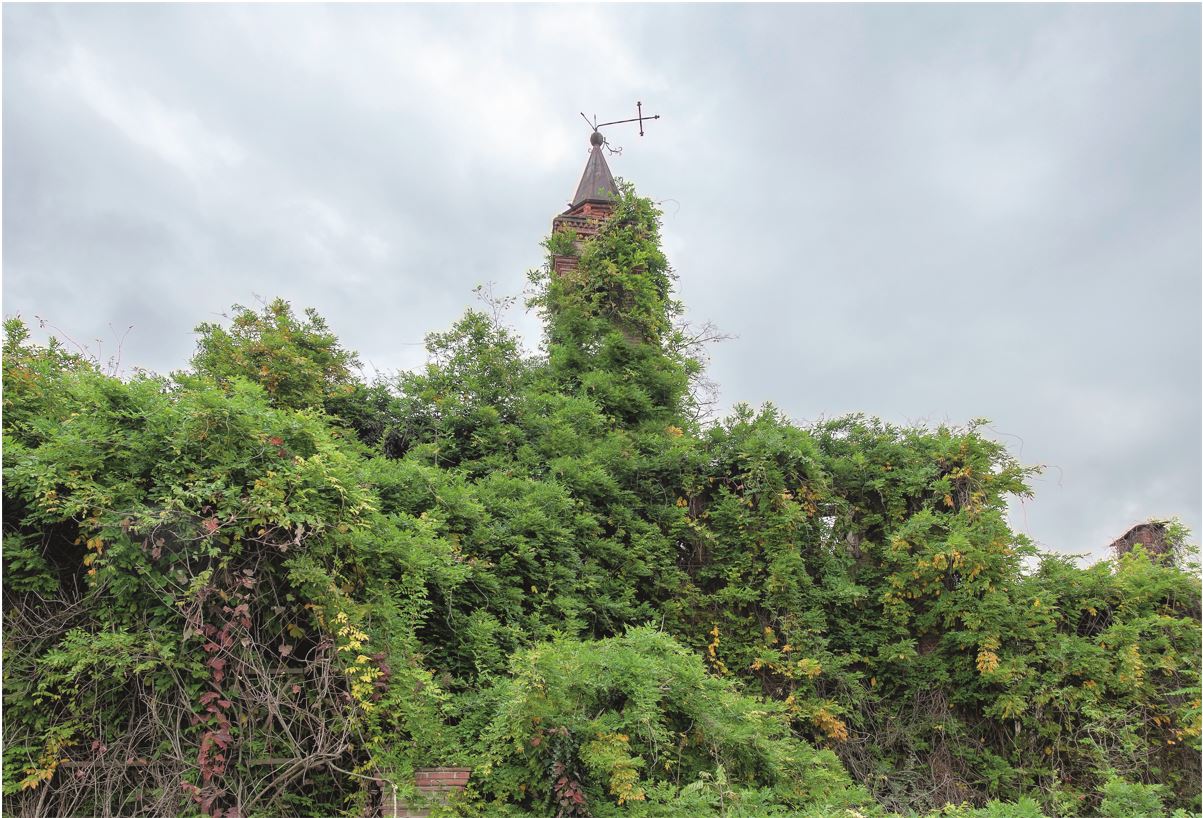 It’s hard to say whether or not this was important in my decision to work on such a project. What I am sure of is that this is a subject that brings interests and challenges, whatever your position is on religion. The decline of religion and the loss of faith in the world is a fact of society.
It’s hard to say whether or not this was important in my decision to work on such a project. What I am sure of is that this is a subject that brings interests and challenges, whatever your position is on religion. The decline of religion and the loss of faith in the world is a fact of society.
I have never set foot in a church as much as I have since taking up photography. Who would have thought that just a few years ago?
What did you learn from this project?
As for Europe and France, in particular, there are many villages with two or three churches to maintain and fewer and fewer priests to give a mass. A priest often finds himself assigned to several villages or even to a larger sector. Residents of many villages have to travel several kilometres to neighbouring villages to hear a mass … while there are several closed churches in their own villages. This is something I have observed personally. Faced with the lack of resources and the drop in attendance at places of worship, a mayor might prefer to spend money on repairing the roof of the school rather than the steeple of its three churches. I even visited a hamlet in central France that has no less than seven churches for a handful of inhabitants. The mayor told me that he only had the money to restore one of the churches, and that was enough for the number of parishioners coming there today.
Churches are closing due to a lack of attendance but also, in many cases, due to dilapidation. With time and the lack of means to keep them in good condition, an increasing number of certain buildings have become dangerous to the public. Their walls are cracking, there are leaks in the roof, and stones are coming loose and falling to the ground. As a precautionary principle, the building is closed to have it appraised. But money is needed for this too. Few of them will ever reopen to hold a mass again. So these churches remain closed as the years go by. The day will come when they are desecrated and forgotten. The lucky ones find themselves on real estate agency websites and will find a second life by reincarnating into a fitness centre, a fast-food restaurant, a library, a cultural centre, a recording studio, or a guest house …
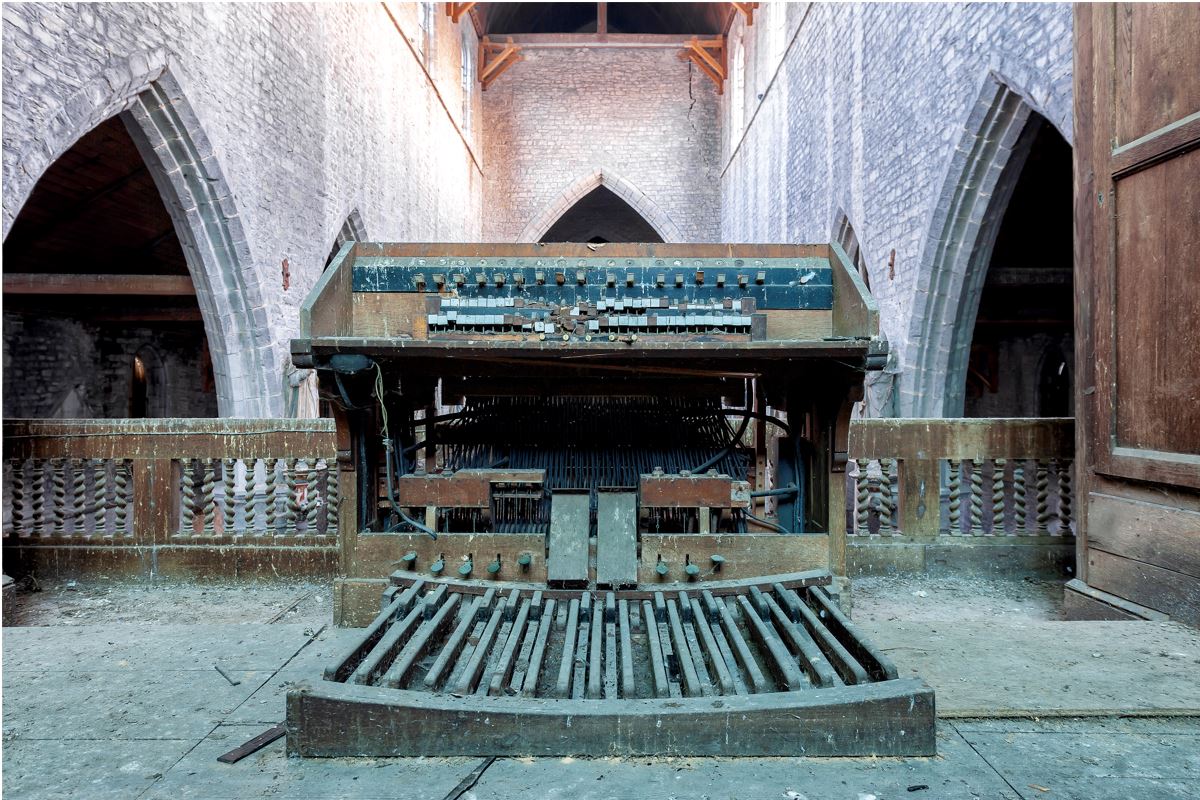
What is the main response you expect the audience to have when viewing these abandoned sites?
I have to say that the main responses I get are actually other questions such as
Is it possible? How is it possible? Why? Where is it? How much would it cost to fix this church?
After this first impression of incomprehension, one of two feelings emerges -sadness or poetry.
It depends on who is looking at these photos.
For my part, I expect nothing but to stir up emotions.
To another extent, the sight of these images can help unblock certain situations.
I have sometimes offered my portfolios to the owners of some places visited so that I could use these images to testify the urgency of some situations. In France, we have an organization called “La Fondation du Patrimoine”. Every year, a few buildings are selected by a jury from this organisation to receive donations and allow owners to start conservation work. But the list is long and the elected officials are few. For example, this is the case with the church which can be found on page 142. I was contacted by the magazine “Géo” a magazine very well known in France (somewhat in the spirit of National Geographic). They published a special dossier on heritage in danger and on the work of the heritage foundation. My portfolio was used to represent this church and testify to its current state.
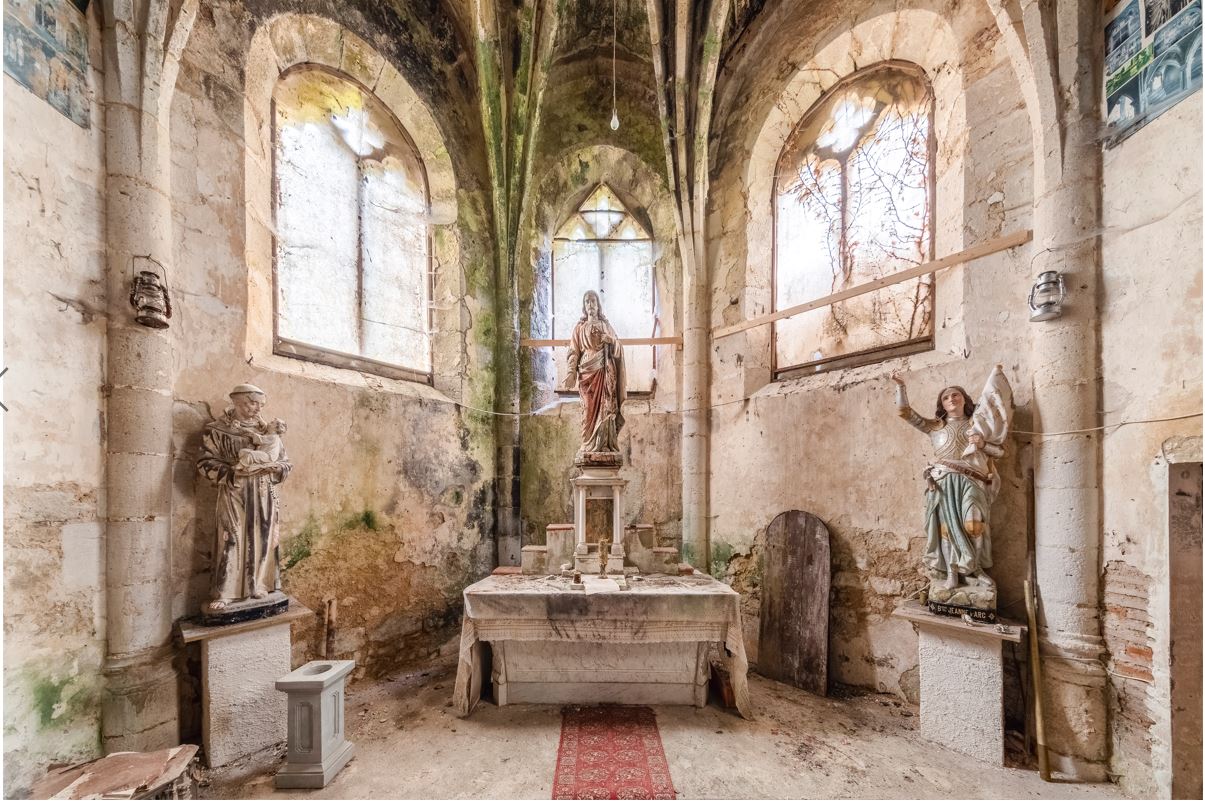
How important do you think religious heritage sites are for understanding our place in history?
Like industrial heritage or historical heritage in general, religious heritage bears witness to the history and evolution of man. The plight of the cathedral builders is one of the most fabulous. They push the limits of what is possible to get as close as they can to the sky by defying all the laws of gravity. It took all the knowledge, talent and work of men over the centuries to leave the still visible trace of these buildings on our Earth.
This religious heritage in particular constitutes the milestones of our history with its outbursts but also its dramatic errors.
In the notion of inheritance, there is this primordial idea that consists in receiving the fruit of the work and the knowledge of our elders in order to better understand how to trace our path and build the future.
What, in your opinion, is one of the best ways we can preserve religious heritage for future generations?
It is difficult to answer this question. Preserving religious heritage can require colossal sums of money.
This phenomenon is all the more paradoxical when we see what happened in France after the fire of Notre Dame de Paris and the incredible amount of money that was collected in a few days to restore it…It’s so strange! All those little churches which are slowly dying in the countryside are not located in the center of one of the most beautiful cities in the world. Is it about faith ? about tourism ? or about national pride?
We observe both a loss of faith throughout the world, and at the same time the question of religious affiliation remains at the heart of the greatest torments of the modern world.
In my opinion, it is a question of respect, in the most general sense of the term, independent of any religious belief.
In regards the religious heritage, the best way to preserve it is first of all not to let it deteriorate. The more it deteriorates, the more expensive it becomes to restore it.
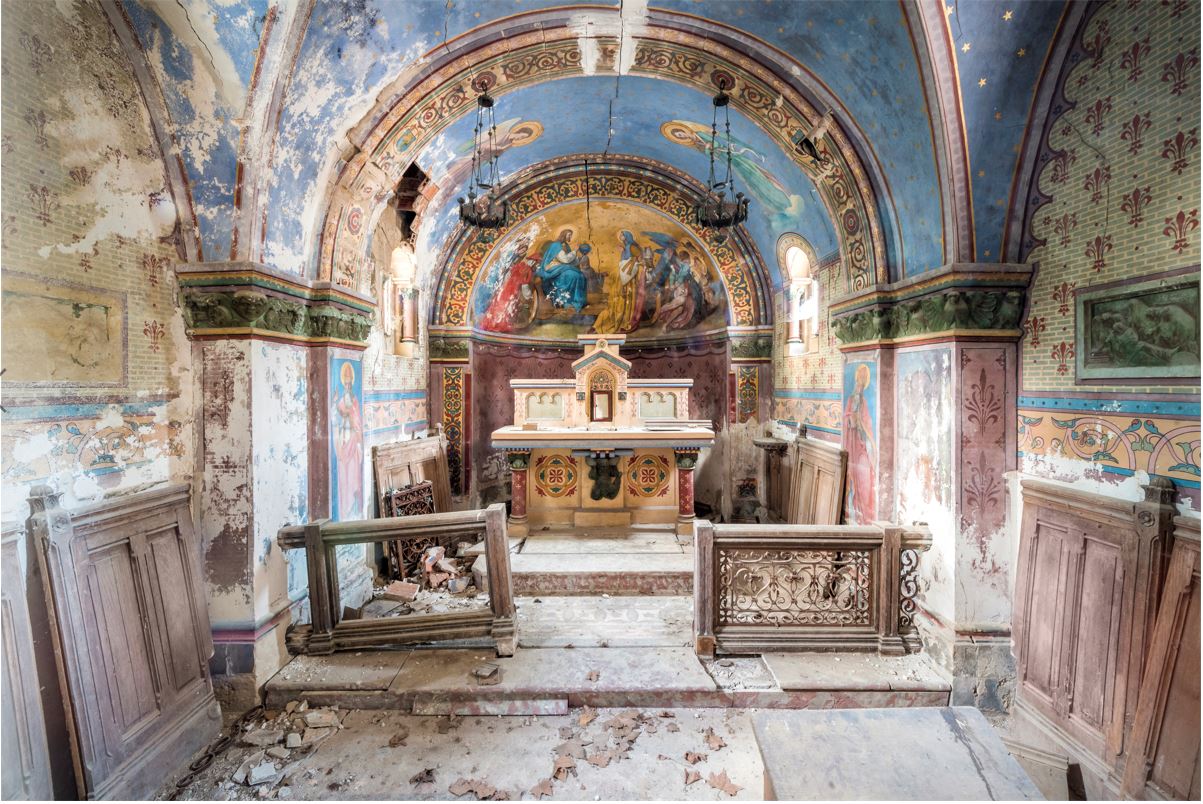
As far as I am concerned, I have chosen to show this heritage in the beauty of its great distress with my photographs. Some of these photographs help today to become aware of a certain urgency and also to raise sums of money to stop the disaster when it is still possible.
Why people are so fascinated by ruins photography?
People indeed seem fascinated by abandoned places and ruins. But this is nothing new. In the 18th century, « Le siècle des lumières », explorers brought the remains of ancient civilizations back to their countries, and art, painting and architecture have seen a certain taste for the representation of ruin. In Italy, the engraver Piranesi has made himself famous among generations of architects with his notebooks depicting the remains of ancient Rome or his imaginary prisons. In France, the painter Hubert Robert painted with great success the ruins of our civilization, Rome on fire or the ruined Louvre museum… In the gardens of the largest castles in Europe, false ruins “les fabriques” were installed to give more of authenticity and charm to the place.
We have always been fascinated by ruins because they have spanned the ages. They question. They refer us to what we are and question us about our own future. They promote a certain state of meditation, poetry and melancholy. We could also speak of some German romantic paintings with the works of Caspar David Friedrich. Often represented from behind in front of an immensity that dominates and exceeds them, its solitary characters, meditate in front of fabulous landscapes.
Today we are in the area of social networks and everyone wants to share their experiences with varying degrees of happiness or talent by posting poorly framed and underexposed selfies on the internet. Photography has become more democratic, video has become accessible to everyone from a simple smartphone. Everyone wants their moment of glory by defying the prohibitions and taking reckless risks to photograph themselves in places deemed dangerous or impenetrable …
Photos
Cover photo – The porcelain saints / 13th, 14th, 16th, and 19th-century church, France, Nouvelle-Aquitaine region © Francis Meslet
Photo 1 – The churches hide themselves to die / 13th-century chapel, Italy, Piedmont region © Francis Meslet
Photo 2 – In your villainous memory / 13th, 15th, and 18th-century church, Belgique, Hainaut © Francis Meslet
Photo 3 – Red light, green light / 15th and 18th-century chapel, France, Nouvelle-Aquitaine region © Francis Meslet
Photo 4 – The hidden side of faith / 19th-century castle chapel, France, Occitanie region © Francis Meslet





Follow us: